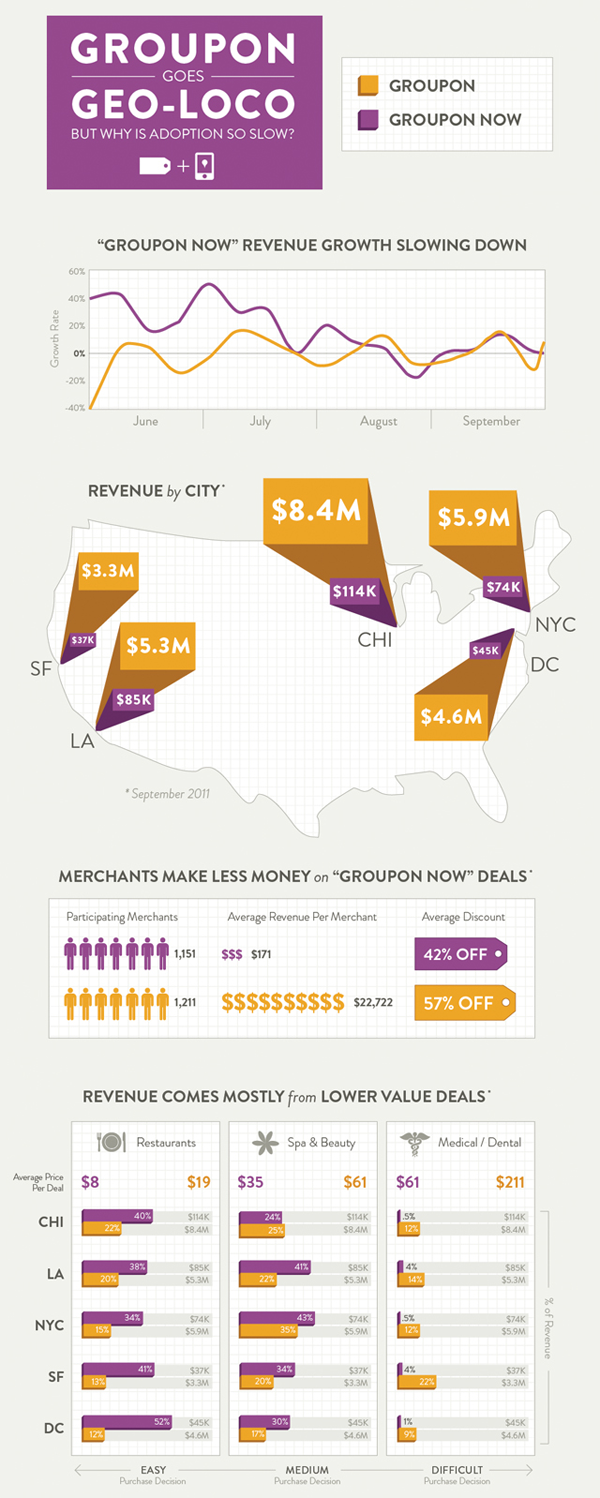Geo-location deals fail to take off for Groupon [infographic]
Share
Adoption of Groupon’s geo-location deal app, Groupon Now, started off strongly in the US but according to data from deal aggregator Yipit it fell away in the latter stages of last year.
Groupon was one of the first companies to give a SoLoMo approach a shot (read our feature story on the emerging trend if you’re not sure what it is), launching its ‘Groupon Now’ app in mid-2011. The location-aware app enables notifications of deals to pop up on consumers’ phones as they walk past participating merchants. It was seen as the next step for Groupon as the business moves to localise its deals, but according to Yipit, the app’s revenue growth has already begun to slow.
In Australia, Groupon and its rivals are yet to launch an app that enables socially aware targetting of deals. Spreets announced today the launch of a new app that enables users to sort by location and find deals close to them, but chose not to include the geo-location functionality of presenting deals to consumers as they walk by participating merchents.
It seems a successful SoLoMo approach for group buying companies is still a way off, even in lead markets. The infographic below shows how Groupon Now’s revenue growth cooled down in the latter stages of last year, and that merchants are making less money per deal than they do from regular web deals, with deal revenue coming primarily from lower value product categories, such as food and beauty.
While the SoLoMo approach has the potential to present consumers relevant deals based on their location, past buying behaviour and social graph, it appears that to make the strategy profitable group buying companies will need to sell a lot of deals to make it worthwhile.















